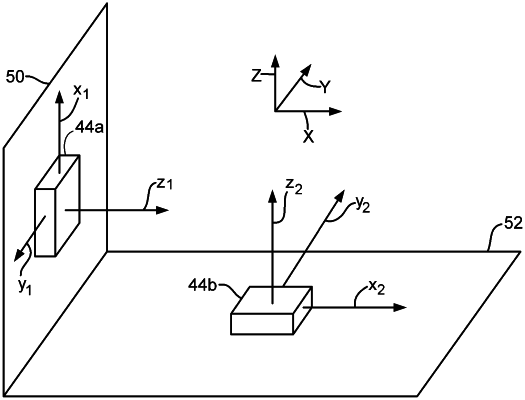| CPC G01P 15/18 (2013.01) [G01P 3/00 (2013.01); G01P 15/00 (2013.01); G01P 15/0888 (2013.01); B81B 2201/0235 (2013.01)] | 12 Claims |

|
1. An accelerometer arrangement configured to determine accelerations along three orthogonal axes in a mechanical shock and vibration environment, said accelerometer arrangement comprising:
a first MEMS triaxial accelerometer and a second MEMS triaxial accelerometer, each of which includes a set of three orthogonally arranged accelerometer sensing axes including a pair of in-plane sensing axes and a normal sensing axis such that each normal sensing axis is subject to a higher rate of failure responsive to mechanical shock and vibration than the in-plane sensing axes with the first and second MEMS triaxial accelerometers supported having the normal sensing axis of the first MEMS triaxial accelerometer at least generally orthogonal to the normal sensing axis of the second MEMS triaxial accelerometer; and
a processor that determines the accelerations along said three orthogonal axes of the device based on a combination of sensing axis outputs from the first and second triaxial accelerometers without using the normal sensing axis outputs of each of the first and second triaxial accelerometers.
|